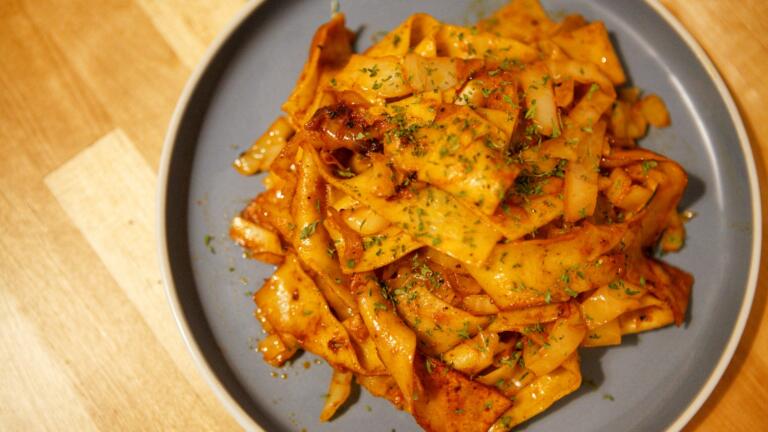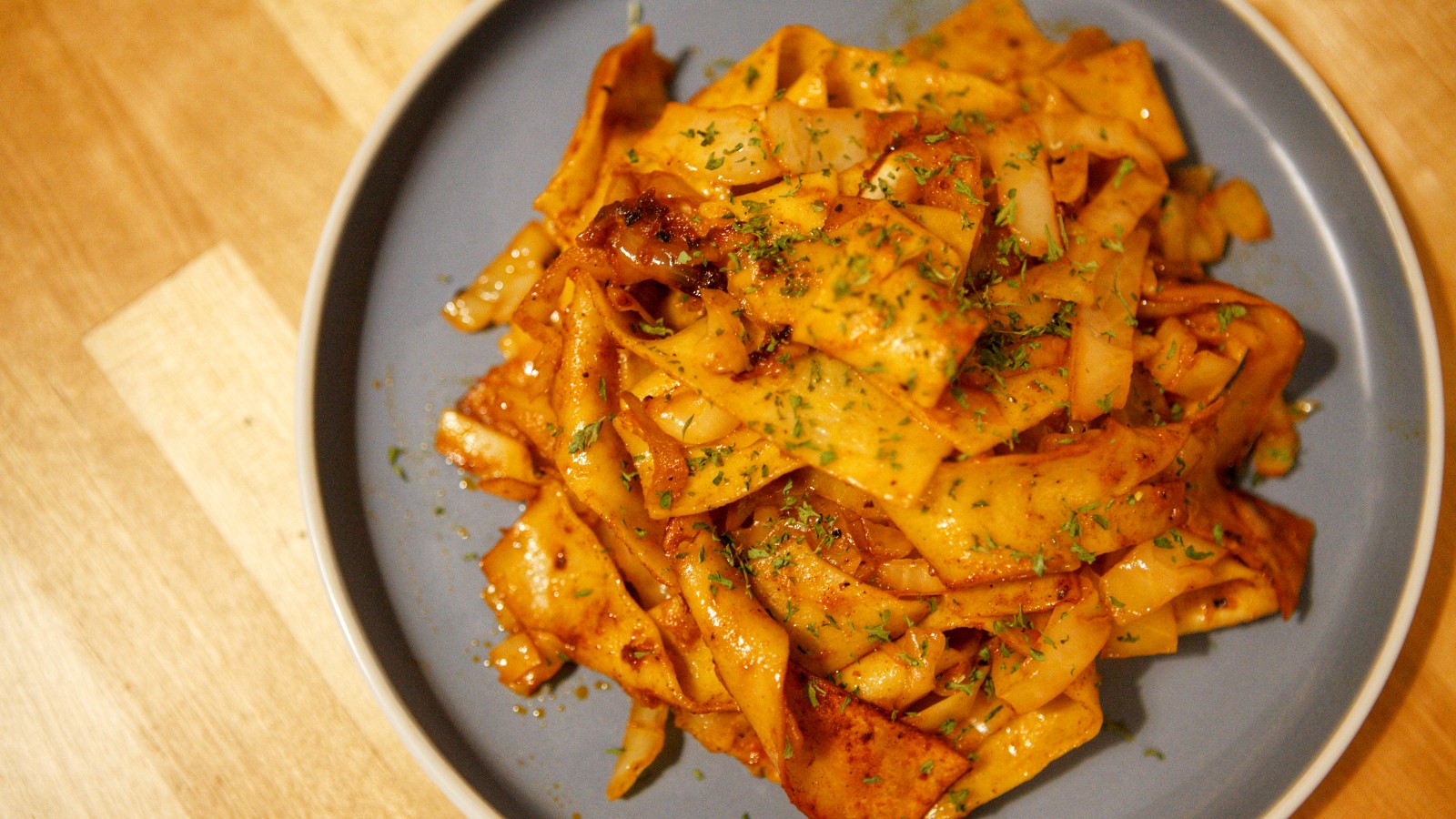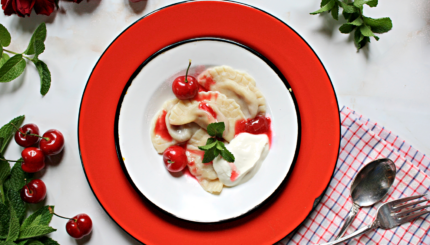What is haluski? The answer, like with many dishes, depends on who you’re asking.
Different varieties pop up across Eastern Europe, including Slovakia, Romania, Poland and Ukraine, where it’s the national dish. The variations likely stem from the fact that haluski simply means “dumplings.” Just as there are many ways to make a kugel, there are many ways to make a dumpling dish.
In general, the dumplings are made from a dough of flour and potatoes. Depending on the consistency of your dough, you might roll it out and cut it up before dropping it into boiling water, not unlike a gnocchi. With a wet dough, you’d simply drop small pieces of the batter one by one into boiling water. There’s even a haluski-specific strainer for the task.
The dumplings are commonly accompanied by cabbage, eggs, and/or cheese. The Slovakian version, for instance, called bryndzové halušky, uses fried cabbage and a sheep’s milk cheese (that’s the bryndzové), but no eggs.
The Nosher celebrates the traditions and recipes that have brought Jews together for centuries. Donate today to keep The Nosher's stories and recipes accessible to all.
When the dish made its ways to the States, likely in the early 20th century, the potato dumplings were ditched in favor of egg noodles. The reason isn’t entirely clear. What’s clearer, though, is that the dish — also known more plainly as cabbage and noodles — at some point found its way into the Hungarian Jewish community.
Haluski follows the same logic of any classic dish that’s stood the test of time: It’s quick and easy, filling, has few ingredients, and can be served as a side dish or as the main course.
I found it while exchanging emails with a cousin, Sandy Mott, in search of heritage recipes to better understand what my ancestors were eating.
“My grandmother was a phenomenal cook,” Sandy wrote. “She used to make a dish called haluski, which was basically sautéed cabbage and onions with wide egg noodles mixed in.”
This recipe comes from Sandy by way of her grandmother, Helen Greenfield, whom likely got it from her husband, Mr. Louis Darnell Sterns. Louis came to the United States from a 19th century shtetl of the Austro-Hungarian empire outside of modern-day Bardejov, Slovakia where Sandy and I trace our shared ancestry. Now that shared heritage lives on in this smoky dish of haluski.

Fried Cabbage and Noodles
This dish is rooted in Eastern Europe, but the traditional dumplings were replaced by egg noodles when Jewish immigrants came to the U.S. This recipe is easy, quick and comforting.
- Total Time: 25 minutes
- Yield: Serves 4-6
Ingredients
- 1 medium onion, chopped
- 1 medium head of cabbage, chopped
- ¾ stick butter + 2 Tbsp
- 1 Tbsp brown sugar (optional)
- 1 ½ tsp smoked paprika
- 1 ½ tsp sweet paprika
- salt and pepper, to taste
- 1 package wide egg noodles
- parsley, to serve (optional)
Instructions
- Place a pan on the stove over medium heat with ¾ stick of butter (about 6 Tbsp). Use olive oil if you want to keep the dish pareve. Simultaneously fill a pot with lightly salted water and bring it to a boil. This will be for your egg noodles.
- While the pan is heating up, remove the core from your cabbage, cut it in half along the spine, and chop into long strands. Dice your onion.
- Once the pan is hot (splash a little water and listen for a sizzle), sauté your cabbage and onions. Season with kosher salt and ground pepper.
- Stir your onions and cabbage frequently for about 8-10 minutes until caramelized.
- Sprinkle with the smoked and sweet paprika. (Sandy’s daughter adds an optional tablespoon of brown sugar at this stage that isn’t part of the original recipe.)
- By now, your pasta water should be boiling. Put in about five cups of wide egg noodles and follow the package’s cooking instructions. Usually it’ll take about 8-10 minutes.
- Once the noodles are ready, pour about a cup of the pasta water into your onion and cabbage mix. Then, drain the noodles and add them into your pan with the onions and cabbage. Allow the pasta water to reduce and the noodles to absorb the flavors. Stir. Add more butter (1-2 Tbsp) as needed to avoid burning on the pan.
- Once everything’s come together, turn the heat off and serve warm. Feel free to garnish with fresh or dried parsley.
- Prep Time: 5 minutes
- Cook Time: 20 minutes
- Category: Side Dish
- Method: Quick
- Cuisine: Ashkenazi
- Diet: Vegetarian




It is great that the author is looking for heritage dishes but in no place in Slovakia, Bryndzove haluski is made with cabbage. It is always cooked with a special sheep cheese called bryndza.
The dish here is Kapustové halušky, Strapačky (Slovak) or sztrapacska (Hungarian) and it is amazing.